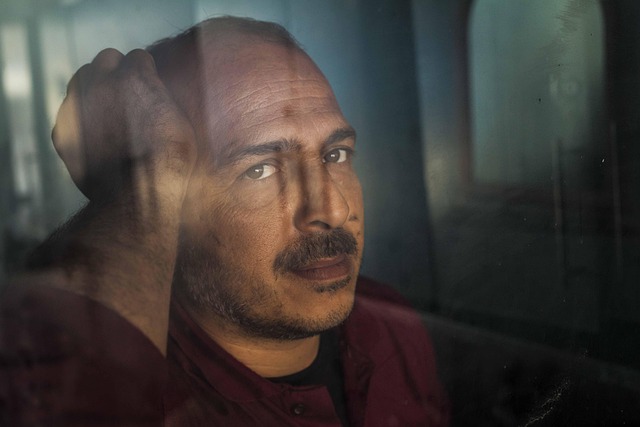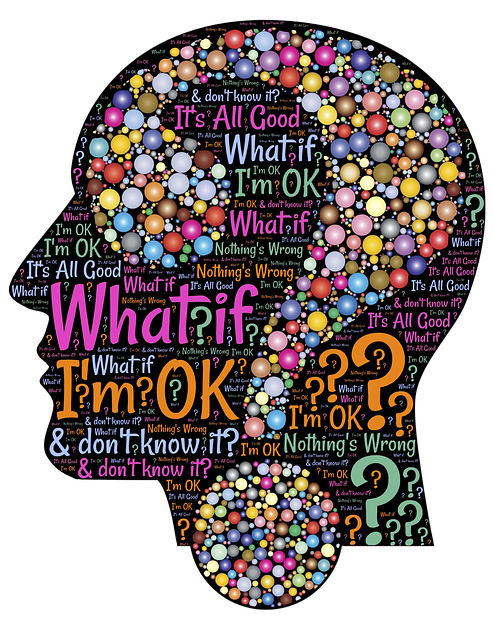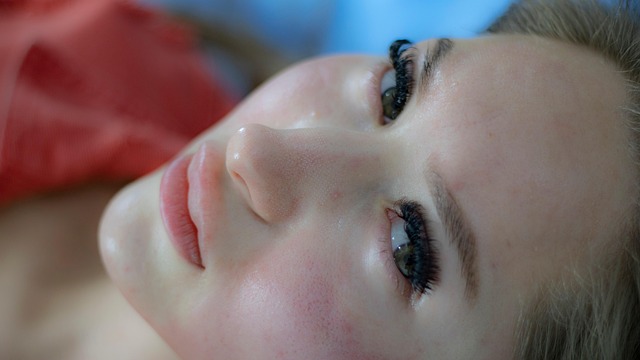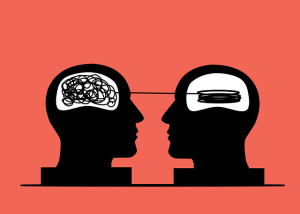Exposure Therapy: A Powerful Anxiety Treatment Approach
Exposure therapy is a highly effective method for treating anxiety by helping individuals confront and overcome their fears in a controlled environment. This CBT technique involves gradual exposure to avoided situations or objects, desensitizing patients to their fears and breaking the cycle of avoidance. By challenging negative thoughts and beliefs associated with these scenarios, individuals gain control over their anxiety symptoms, leading to improved quality of life. The process begins with identifying specific fears, followed by developing a structured treatment plan using techniques like in-vivo and VR exposures, cognitive restructuring, regular sessions, consistent practice, and progress tracking. Overcoming challenges through guided exposure, celebration of small wins, and supportive networks enhances the success rate of this evidence-based anxiety treatment. Accessing professional help from qualified therapists specializing in exposure therapy is crucial for optimal outcomes.
“Unleash yourself from the grip of anxiety with exposure therapy—a powerful and effective tool for managing fear. This comprehensive guide explores how this therapeutic approach challenges your anxieties by gradual exposure, reshaping your responses. From understanding its mechanism to tackling specific fears, creating structured plans, and choosing between in-vivo or virtual reality exposures, we demystify the process. Learn about cognitive restructuring, common hurdles, inspiring success stories, and finding qualified therapists for a transformative journey towards anxiety relief.”
Understanding Exposure Therapy: A Powerful Tool Against Anxiety

Exposure therapy is a highly effective anxiety treatment approach that helps individuals confront and overcome their fears in a safe and controlled environment. At its core, this therapy involves gradually exposing people to situations or objects they avoid due to anxiety, allowing them to learn that these feared stimuli are not dangerous. By facing their anxieties step by step, patients can develop coping strategies and reduce the intensity of their emotional responses over time.
This therapeutic method is based on the understanding that fear and anxiety often result from avoidance behaviors, which can create a cycle where individuals become trapped in their worries. Exposure therapy breaks this cycle by encouraging patients to engage with their fears, thereby desensitizing themselves to them. This process empowers people to take control of their lives, manage their anxiety symptoms, and lead more fulfilling lives free from the constraints of fear.
How Does Exposure Therapy Work for Treating Anxiety?

Exposure therapy is a highly effective form of cognitive-behavioral therapy (CBT) specifically designed to help individuals confront and manage their fears and anxiety in a safe and controlled environment. The primary goal is to desensitize patients to stressful or anxious situations by gradually exposing them to these triggers, thus changing their emotional response over time. This process allows individuals to challenge their negative thoughts and beliefs about specific situations or objects that induce anxiety.
During exposure therapy sessions, a therapist guides the patient through various steps, starting from less intimidating scenarios and progressively moving towards more challenging ones. By facing their fears repeatedly, patients learn to recognize that their anticipated outcomes are often worse than reality. This realization helps reduce anxiety and changes the individual’s behavior, thought patterns, and emotional responses, ultimately leading to improved anxiety treatment and a higher quality of life.
Identifying Targets for Exposure: Specific Fears and Phobias

Identifying specific fears and phobias is a crucial step in exposure therapy for anxiety treatment. This process involves collaborating closely with a therapist to pinpoint the exact triggers that evoke anxious responses. Whether it’s fear of heights, public speaking, or specific animals, these targets are tailored to each individual’s unique experience. By understanding these triggers, therapists can design a structured and gradual approach to exposure, ensuring a safe and controlled environment for patients to confront their fears.
The identification process often includes detailed discussions, keeping journals, and sometimes, direct observation. This helps in categorizing the intensity and frequency of anxiety symptoms associated with each trigger. Once identified, these specific fears become the focus of exposure exercises, aiming to desensitize individuals to their triggers over time, ultimately reducing anxiety responses and promoting a more balanced and controlled emotional state.
Creating a Structured Treatment Plan: Steps and Techniques

Creating a structured treatment plan is essential for effective exposure therapy, an evidence-based anxiety treatment. The process begins with identifying specific fears and anxious triggers. This involves a collaborative effort between therapist and client, where they jointly develop a hierarchy of anxiety-provoking situations, ranking them from least to most fearful. Once the list is established, a step-by-step approach is designed, starting with less daunting scenarios.
Therapists employ various techniques, such as gradual exposure, where clients confront fears in a controlled manner, and cognitive restructuring, helping individuals challenge negative thoughts. The plan should be tailored to individual needs, allowing for flexibility while maintaining a clear structure. Regular sessions, consistent practice between meetings, and tracking progress are key components, ensuring clients stay motivated and achieve meaningful results in their anxiety treatment journey.
Facing Your Fears: In-Vivo vs. Virtual Reality Exposures

Facing your fears is a key component of exposure therapy for anxiety, and there are two primary methods used to achieve this: in-vivo (real-life) exposures and virtual reality (VR) exposures. In-vivo exposures involve gradually confronting anxiety-provoking situations in real life, starting from less frightening scenarios and progressively moving towards more challenging ones. This method helps individuals build confidence and learn coping strategies as they face their fears head-on.
Virtual reality exposure therapy offers a different yet equally effective approach. Using immersive VR environments, clients can be exposed to anxiety-inducing stimuli in a safe, controlled setting. VR allows for precise manipulation of variables, enabling therapists to tailor the experience to each individual’s needs. This technology provides a unique opportunity to expose people to their fears repeatedly until anxiety responses diminish, making it a valuable tool in anxiety treatment.
Cognitive Restructuring: Changing Thoughts Behind Anxiety

Cognitive restructuring is a key component of exposure therapy, targeting the thoughts and beliefs that contribute to anxiety. It involves identifying and challenging negative or distorted thought patterns, often unconsciously learned over time. These thoughts can be irrational and exaggerated, such as “I’ll fail this test” or “Everyone will judge me.” By questioning these automatic negative thoughts (ANTs), individuals learn to replace them with more balanced and realistic perspectives.
Through cognitive restructuring, patients gain a new understanding of their anxiety triggers and realize that their interpretations are not based on facts. This process empowers them to manage their anxiety in a healthier way, reducing the impact of fear-inducing situations or objects. By changing the way they think, individuals can gradually change how they feel, leading to more effective anxiety treatment.
Common Challenges in Exposure Therapy and How to Overcome Them

Exposure therapy, a cornerstone in anxiety treatment, offers a direct approach to confronting fears and phobias. However, several common challenges can impede progress. One significant hurdle is avoidance behavior; individuals often struggle against the instinct to retreat from stressful situations, hindering exposure to feared triggers. To overcome this, therapists should encourage gradual exposure, starting with less daunting scenarios, and celebrate small victories. This builds confidence and reinforces learning.
Another challenge lies in the potential for relapsing symptoms. Anxiety disorders are recurrent, and previous progress can be jeopardized if individuals become discouraged or slip back into avoidance patterns. Consistent therapy sessions, regular practice of exposure exercises between sessions, and fostering a support system can mitigate this risk. Additionally, teaching coping strategies and mindfulness techniques empowers clients to manage anxiety effectively during challenging moments, enhancing their overall success in exposure therapy for anxiety treatment.
Real-Life Success Stories: Transforming Lives Through Exposure

Many individuals suffering from anxiety disorders have found real-life success stories through exposure therapy, a powerful component of anxiety treatment. By gradually facing their fears in safe, controlled environments, patients can learn to manage and overcome their anxiety responses. This process empowers them to take control of their lives, enabling them to engage in activities they once avoided due to anxiety.
Exposure therapy offers tangible results, transforming lives by reducing the intensity of anxiety symptoms. Through repeated exposure, individuals build resilience, gaining a deeper understanding of their triggers and learning effective coping mechanisms. These success stories serve as powerful testaments to the efficacy of exposure therapy in treating anxiety disorders, providing hope and inspiration for those seeking relief from anxiety’s grip.
Accessing Professional Help: Finding Qualified Therapists for Exposure Therapy

Accessing professional help is a crucial step in the journey towards managing and overcoming anxiety. Finding qualified therapists who specialize in exposure therapy is essential for effective treatment. Many individuals struggling with anxiety benefit from this evidence-based approach, which involves gradually exposing oneself to feared situations or objects in a safe and controlled manner.
There are several ways to locate skilled therapists offering exposure therapy as part of anxiety treatment. Start by consulting with your primary care physician, who can provide recommendations based on their experience. Additionally, online directories and mental health platforms offer valuable resources to search for specialists in your area. Verifying credentials and ensuring the therapist has extensive experience in exposure therapy is vital to guarantee the best possible outcome during this therapeutic process.
